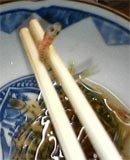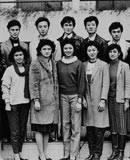不支持Flash
|
同等学力考研英语复习资料之阅读理解(3)
Passage 3
To say that the child learns by imitation and that the way to teach is to set a good example oversimplifies. No child imitates every action he sees. Sometimes, the example the parent wants him to follow is ignored while he takes over contrary patterns from some other example. Therefore we must turn to a more subtle theory than “Monkey see, monkey do.”
Look at it from the child's point of view. Here he is in a new situation, lacking a ready response. He is seeking a response which will gain certain ends. If he lacks a ready response for the situation, and cannot reason out what to do, he observes a model who seems able to get the right result. The child looks for an authority or expert who can show what to do.
There is a second element at work in this situation. The child may be able to attain his immediate goal only to find that his method brings criticism from people who observe him. When shouting across the house achieves his immediate end of delivering a message, he is told emphatically that such a racket(叫嚷) is unpleasant, that he should walk into the next room and say his say quietly. Thus, the desire to solve any objective situation is overlaid with the desire to solve it properly. One of the early things the child learns is that he gets more affection and approval when his parents like his response. Then other adults reward some actions and criticize others. If one is to maintain the support of others and his own self-respect, he must adopt responses his social group approves.
In finding trial responses, the learner does not choose models at random. He imitates the person who seems a good person to be like, rather than a person whose social status he wishes to avoid. If the pupil wants to be a good violinist, he will observe and try to copy the techniques of capable players; while some other person may most influence his approach to books.
Admiration of one quality often leads us to admire a person as a whole, and he becomes an identifying figure. We use some people as models over a wide range of situations, imitating much that they do. We learn that they are dependable and rewarding models because imitating them leads to success.
11. The statement that children learn by imitation is incomplete because______ .
A. they only imitate authorities and experts
B. they are not willing to copy their parents
C. the process of identification has been ignored
D. the nature of their imitation as a form of behavior has been neglected
12. For a child the first element in his learning by imitation is .
A. the need to find an authority
B. the need to find a way to achieve the desired result
C. the need for more affection from his parents
D. the desire to meet the standards of his social group
13. Apart from achieving his desired results, a child should also learn to_____ .
A. behave properly C. show his affection for his parents
B. attain his goal as soon as possible D. talk quietly
14. Children tend to imitate their models______ .
A. who do not criticize them B. who bring them unexpected rewards
C. whom they want to be like D. whose social status is high
15. “An identifying figure”(Line 2, Para. 5. )refers to a person_____ .
A. who serves as a model for others B. who is always successful
C. who can be depended upon D. who has been rewarded for his success
特别说明:由于各方面情况的不断调整与变化,新浪网所提供的所有考试信息仅供参考,敬请考生以权威部门公布的正式信息为准。




